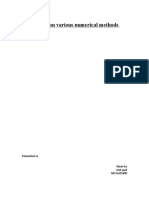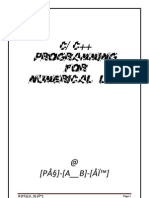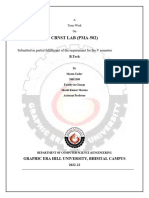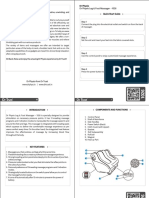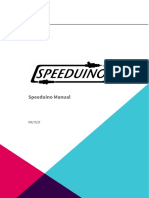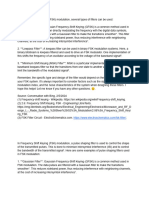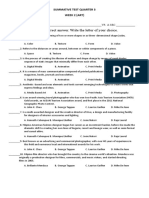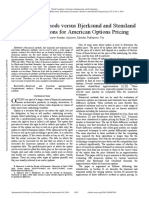0% found this document useful (0 votes)
17 views15 pagesC++progamm 6th Sem
The document contains multiple C++ programs demonstrating various numerical methods including Gauss Elimination, Jacobi Iterative, Bisection, Gauss Jordan, Simple Iterative, Curve Fitting for a Parabola, and Curve Fitting for a Straight Line. Each method is illustrated with example inputs and corresponding outputs, showcasing how to solve systems of equations, find roots, and fit curves to data. The programs utilize standard input/output for user interaction and display results in a structured format.
Uploaded by
kirubajea.8Copyright
© © All Rights Reserved
We take content rights seriously. If you suspect this is your content, claim it here.
Available Formats
Download as DOCX, PDF, TXT or read online on Scribd
0% found this document useful (0 votes)
17 views15 pagesC++progamm 6th Sem
The document contains multiple C++ programs demonstrating various numerical methods including Gauss Elimination, Jacobi Iterative, Bisection, Gauss Jordan, Simple Iterative, Curve Fitting for a Parabola, and Curve Fitting for a Straight Line. Each method is illustrated with example inputs and corresponding outputs, showcasing how to solve systems of equations, find roots, and fit curves to data. The programs utilize standard input/output for user interaction and display results in a structured format.
Uploaded by
kirubajea.8Copyright
© © All Rights Reserved
We take content rights seriously. If you suspect this is your content, claim it here.
Available Formats
Download as DOCX, PDF, TXT or read online on Scribd
/ 15



